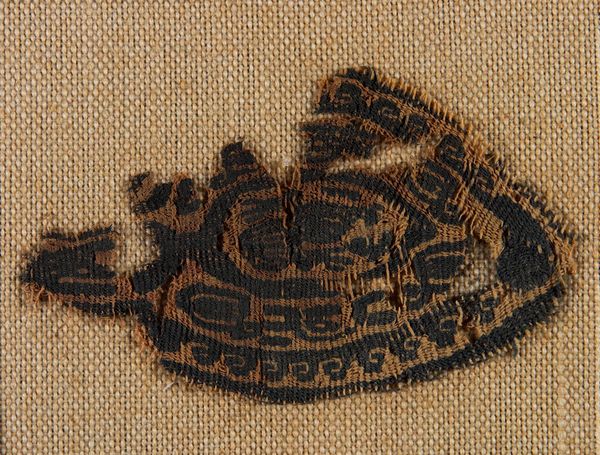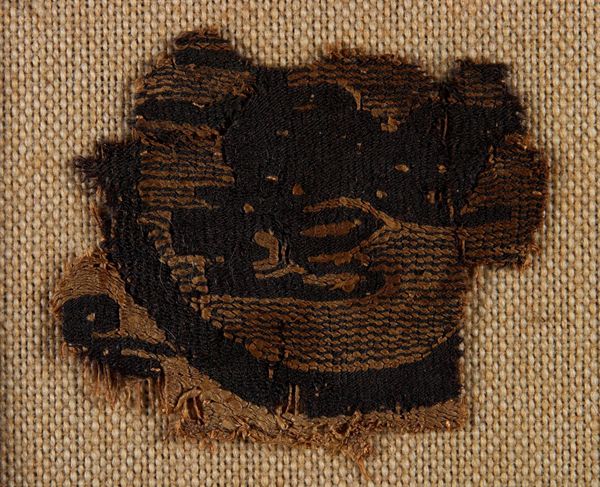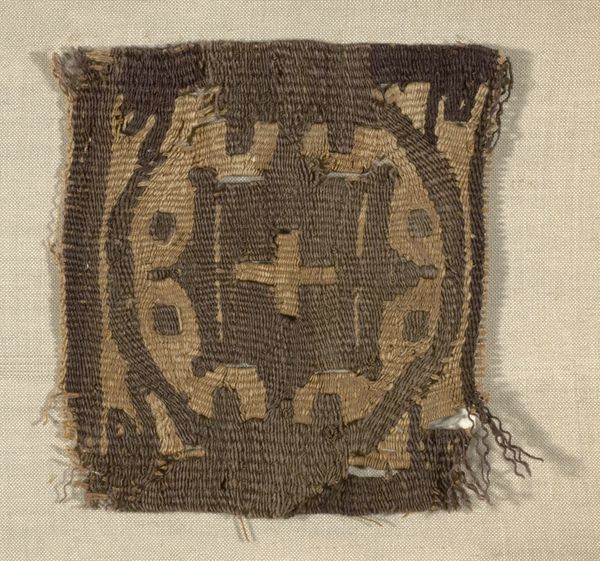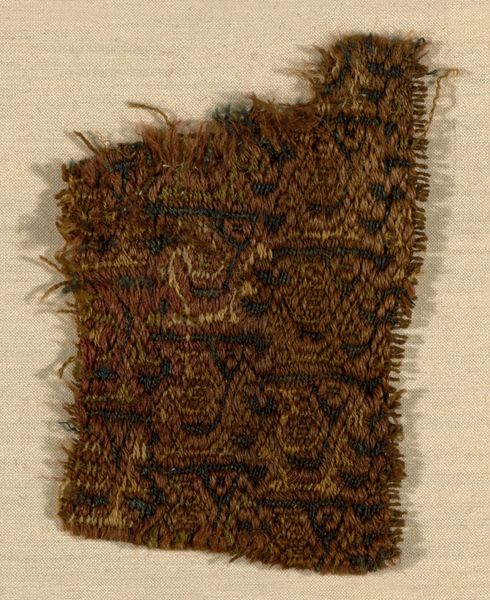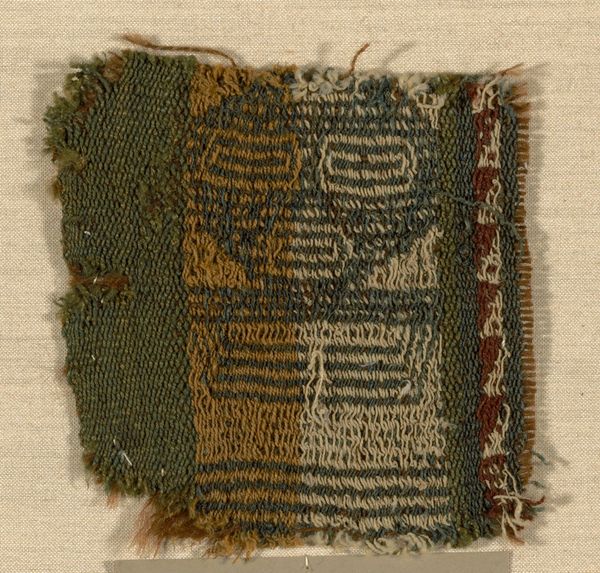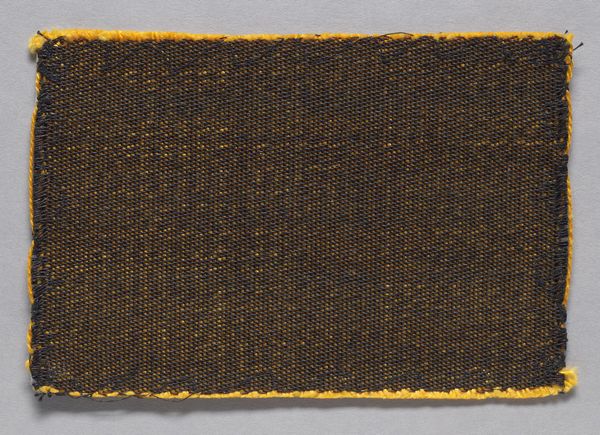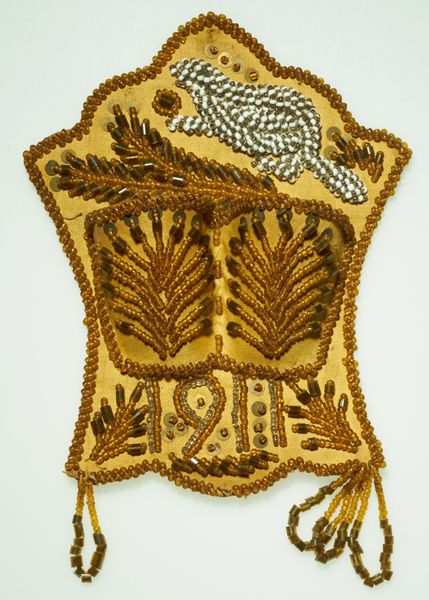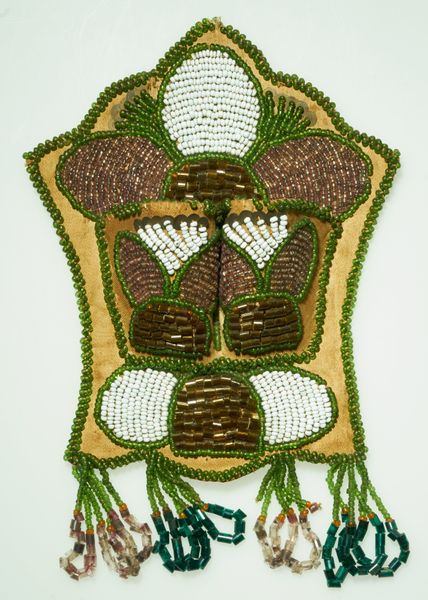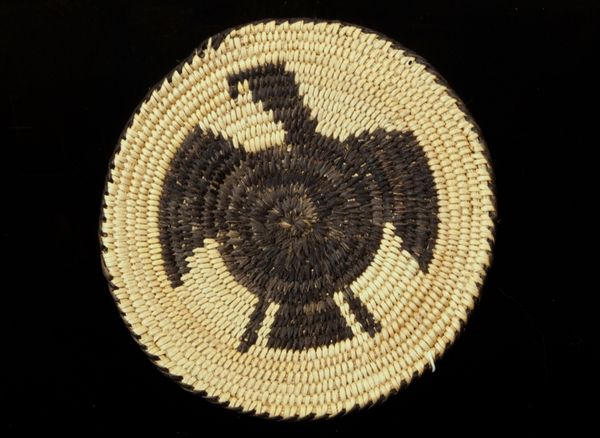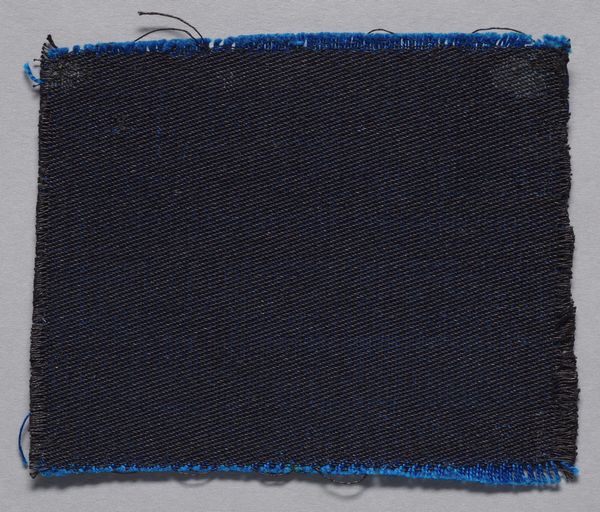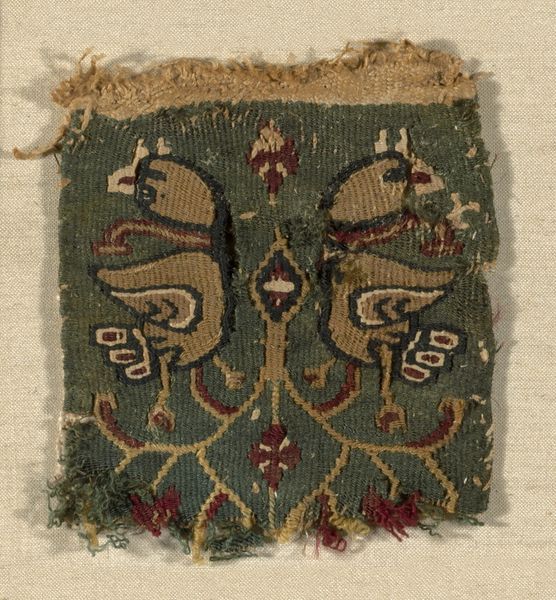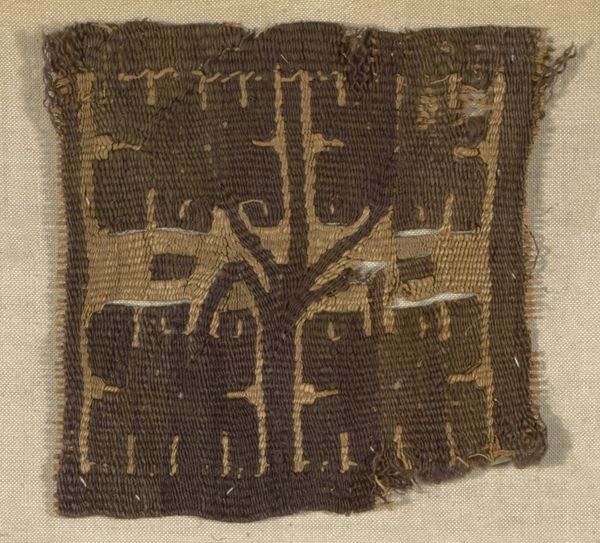
fibre-art, weaving, textile
#
fibre-art
#
weaving
#
textile
Dimensions: 2 1/2 x 2 1/4 in. (6.35 x 5.72 cm) (fragment)4 1/4 x 2 15/16 in. (10.8 x 7.46 cm) (mount)
Copyright: Public Domain
Editor: We're looking at a Textile Fragment from the Minneapolis Institute of Art. It’s categorized as fibre art and weaving, likely Egyptian in origin, though undated. The worn edges and geometric patterns give it an ancient, almost mysterious quality. What can you tell me about its potential story? Curator: Given its classification, this fragment's existence speaks volumes about cultural exchange and power dynamics. Ancient Egypt, known for its sophisticated textiles, often used these pieces not just for adornment, but also as status symbols or within funerary practices. Do you see any particular motifs? Editor: There appears to be some kind of creature at the center; perhaps an eagle, but my eye keeps getting drawn to the geometric aspects of its overall layout. Curator: Exactly! Geometric designs are common in many ancient cultures. Their usage, in this case, could be indicative of the intended wearer or the location it was meant to decorate. Knowing this was found in a museum context prompts consideration, where would this have originally existed outside this sterile environment? Think about where it would be created, worn or found. These fragments found their way into museums through collecting practices that aren’t always ethical or transparent. Does this change your perception of the object? Editor: Absolutely, it raises uncomfortable questions about the ethics of acquisition and display, especially concerning cultural artifacts from ancient civilizations. What did it mean at the time versus what it means today being a spectacle in a museum. Curator: Precisely. And by considering the socio-political context, we acknowledge that museums themselves are not neutral spaces, but rather active participants in shaping narratives around art and culture. It emphasizes that our interpretations are always evolving. Editor: That’s really changed my perspective. I initially saw only an aesthetically pleasing fragment, but now I see layers of cultural meaning and a complex history of ownership and display. Curator: And understanding that complexity allows us to engage more thoughtfully with art, recognizing it not just as a beautiful object, but also as a product of its time, and ours.
Comments
No comments
Be the first to comment and join the conversation on the ultimate creative platform.
